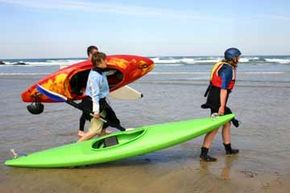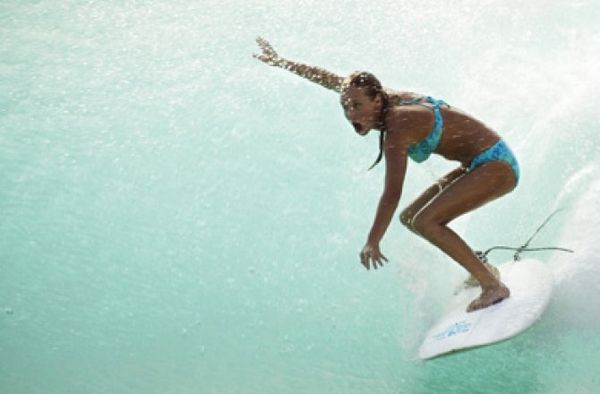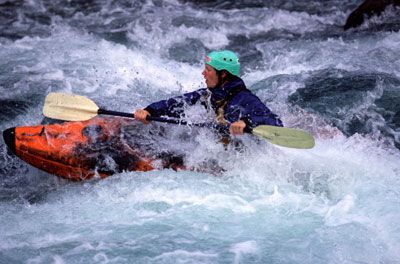If you're looking to expand your water sport repertoire, kayak surfing could be just the right thing. This quickly growing sport is basically like traditional board surfing, except instead of riding the waves on a board, you maneuver through the surf with a kayak.
Kayak surfing is a relatively recent sporting invention. Although as a sporting activity, kayak surfing dates back to the 1920s, the first competitions occurred in the 1960s in Great Britain. During the 1980s, the sport began to pick up in Great Britain and the United States [source: Adventure Sports Unlimited].
Advertisement
Kayak surfing is similar to whitewater kayaking, so it uses vessels that are very similar to small whitewater kayaks. But surf kayaks are often made of fiberglass instead of plastic, and they tend to be curved at the nose and flat at the back [source: Beman]. The surf kayak's design allows it to reach high speeds, but you don't need big, fast waves to take up the sport. Even smaller surf, such as that found on the eastern coast of the United States, is suitable for kayak surfing.
Kayak surfers have two choices for kayak type: sit-on-top kayaks, which are often used in warmer water, and sit-in kayaks. In both types, the kayaker needs to be attached to the boat. The paddler in the sit-in style is attached by the spray skirt (a waterproof piece worn around the waist to form a seal at the boat's opening), and the paddler in the sit-on-top style must strap him or herself with high braces that allow the paddler to control the boat. For safety reasons, you generally shouldn't use regular recreational kayaks to kayak surf. Instead you should use only sit-on-top kayaks designed for the ocean or certain whitewater kayaks with special spray skirts. In addition, you'll also need double-sided kayak paddles to steer yourself through the waves.
Although kayak surfing doesn't yet have the universal popularity of regular outdoor activities such as kayaking or surfing, it is a quickly growing water sport. One reason that it may not be as popular as other water sports is that surfers sometimes guard their turf pretty intensely, and they can sometimes view kayakers as invading their territory [sources: Nieves]. Also, many people regard the sport as dangerous. When you're surfing, you can bail from your board pretty easily, but ditching a kayak while strapped to it can be more difficult. We'll look at safety measures later on to determine what the dangers are and how to prevent them.
We'll also examine some kayak surfing techniques, tips and safety precautions. But before we get into the practice of kayak surfing, we'll first take a look at the basic physics principles behind it.
Advertisement




